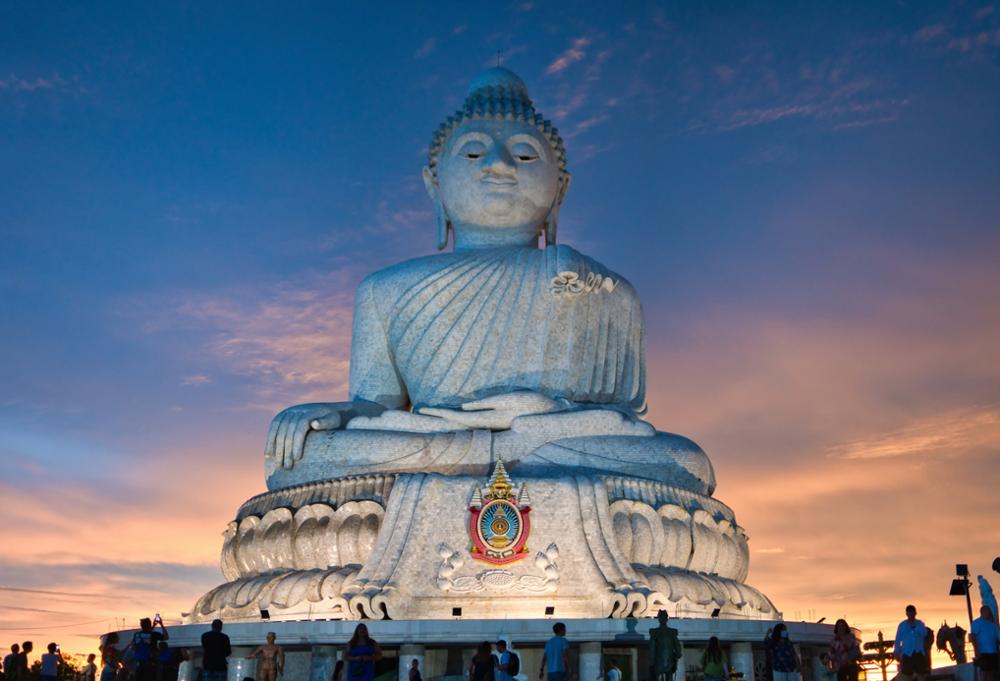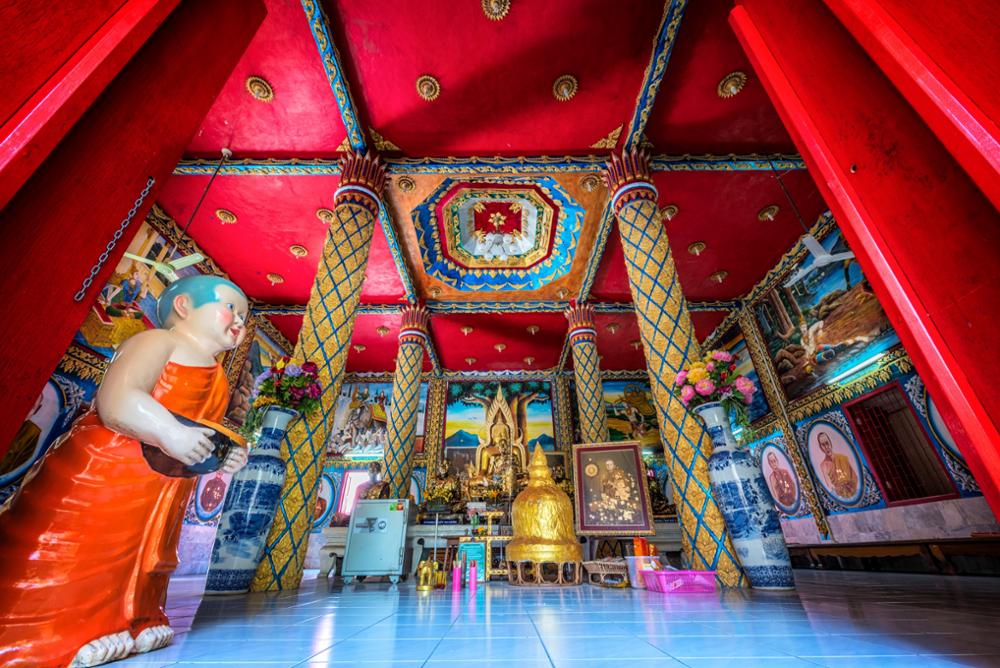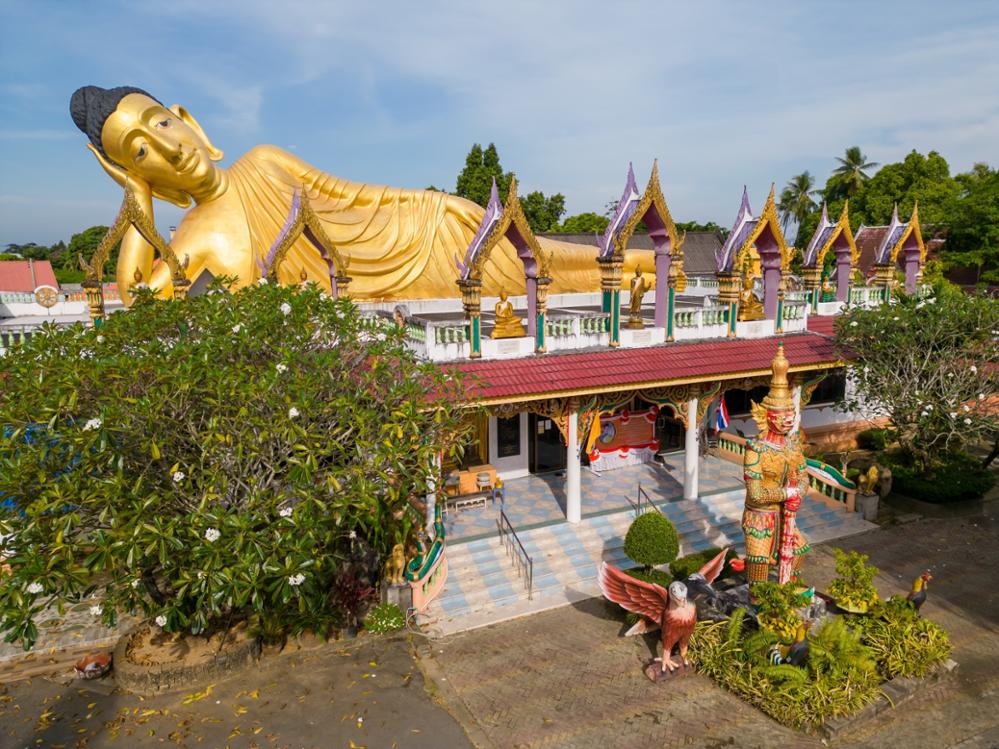Thailand
Temples of Phuket: Which ones to visit?
If you're passing through Phuket and wish to visit some temples, it's a wonderful idea to explore these spiritual places where the meditative atmosphere contrasts with the hustle and bustle of the city center. Let us take you on a journey to discover the most sacred sites in the region with our top 5 most beautiful temples in Phuket.
1.Wat Chalong

Also known as Wat Chaithararam, Wat Chalong is the most important temple in Phuket and the largest on the island. Located about 8 km from Phuket Town, it attracts thousands of visitors, both tourists and locals.
Built in the early 19th century, the temple has been expanded over the years. It is famous for its chedi (stupa) inaugurated in 2004. Inside this 60-meter-high structure, there is a fragment of the Buddha's bone. You can also admire beautiful murals on the interior walls and ceilings illustrating the life of Buddha.
Visitors can also climb to the 3rd floor to enjoy a panoramic view from the terrace. From there, you can see the famous Big Buddha of Phuket perched on its hill in the distance. A few more steps lead to the Buddha's bone fragment, which is displayed behind a glass case.
Wat Chalong is also associated with two monk founders of the temple: Luang Pho Chaem and Luang Pho Chuang. These revered monks are known for leading the citizens of Chalong in their fight against the Chinese rebellion in 1876 and for treating the wounded with their knowledge of herbal medicine. Even today, locals come to pay their respects, and you will see their representations in the entrance hall where thousands of fine gold leaves have been left by the faithful.
Practical Information :
- Free entry
- Address: 70 Moo 6 Chaofa Road (West), Chalong, Phuket 83000
- Opening Hours: Daily from 8 AM to 5 PM
2.Wat Khao Nakkerd (Big Buddha)

Impossible to miss, the Big Buddha of Phuket can be seen from all corners of the island. Perched atop Mount Nagakerd at an altitude of 420 meters, the Big Buddha has become the city's symbol. This 45-meter-tall, 25.45-meter-wide marble statue is one of the largest Buddha statues in Thailand and the most important monument in Phuket.
Part of Wat Khao Nakkerd, the Big Buddha was built in homage to King Rama IX. It depicts the historical Buddha making the mudrā, the gesture of calling the earth to witness (also known as the victory over Māra). To support the construction of the building, the temple offers visitors the chance to purchase marble tiles on which they can inscribe a wish.
Besides the statue, Wat Khao Nakkerd is worth a visit for its breathtaking views of the island, its surroundings, and the Andaman Sea.
It is worth noting that access to the Big Buddha can be difficult. If you're not up for the steep climb on a scooter, consider taking a taxi.
Practical Information :
- Free entry
- Address: 42/14 Moo 2, Thepkrasattri Road, Rasada Sub-district, Muang District, Phuket 83000
- Opening Hours: Daily from 6:30 AM to 6:30 PM
Following a landslide on August 23, 2024, near the Big Buddha, the temple is closed to the public indefinitely.
3. Wat Phra Thong

Located in the northern part of Phuket, about 20 kilometers from Phuket Town, Wat Phra Thong is famous for housing a unique Buddha statue known as Luangpho Phra Phut. This 3-meter-high statue is completely covered in gold, and its peculiarity is that it is partially buried. Only the Buddha's torso rises above the ground.
According to legend, the statue was once buried underground. One day, a young boy tied his buffalo to what he thought was a post or tree stump, and both he and his buffalo fell ill and died. Villagers dug around and eventually discovered the golden Buddha buried beneath the earth.
The National Tourism Office of Thailand reports that when Burmese invaders tried to remove the statue in the 18th century, they were attacked by a swarm of hornets. Many who tried to extract the statue were attacked by ants and hornets, and the Buddha statue remained undisturbed, leading to the construction of Wat Phra Thong around it.
In addition to the Buddha statue, the temple also houses a museum with a collection of items and artifacts reflecting the history of Phuket.
Practical Information :
- Free entry
- Address: 172/2 Nanai Rd, Thalang District, Phuket 83110
- Opening Hours: Daily from 8 AM to 5:30 PM
4. Wat Phra Nang Sang

Located 20 km from the city center, Wat Phra Nang Sang is one of the oldest temples in Phuket, dating back over 200 years.
The temple is also tied to a legend. According to local beliefs, it was built by Lady Luad Khao, the wife of the ruler of Nakhon Si Thammarat. Falsely accused of adultery, she traveled to Sri Lanka to pray for Buddha's relics before stopping in Thalang (modern-day Phuket), where she had the temple built before being sentenced to death. Legend has it that when she was executed, her blood was white. The temple was later named Wat Phra Nang Sang, which translates to "temple built by the lady."
Wat Phra Nang Sang also served as a Burmese military camp during the Battle of Thalang in 1785. Inside the main building, known as the ubosot, are the three oldest and largest bronze Buddha statues in the world, known as "The Three Kings."
Practical Information :
- Free entry
- Address: 148 Moo 1, Thep Krasattri Road, Thep Krasattri, Thalang, Phuket 83110
- Opening Hours: Daily from 8 AM to 6 PM
5. Wat Sri Sunthon (Wat Srisoonthorn)

Head to the north of Phuket, about 15 km from the city center, to discover Wat Sri Sunthon (also spelled Wat Srisoonthorn). Built in 1792, it was originally named Wat Lipon before being renamed by King Rama I.
The temple is home to a popular attraction: a 29-meter-long reclining Buddha statue. Located on the roof of one of the buildings in the complex, the bronze statue depicts Buddha in the "Pang Sai Yat" position, symbolizing the realization of Nirvana.
The temple also features murals depicting scenes from Buddha's life. In the gardens, you will find colorful animal statues as well as amusing creatures and demons from Thai culture. For example, you may see a terrifying statue of a Phi Phret, the ghost of a person who lived a life of blasphemy. It is depicted as a tall, thin body with large hands and a tiny mouth.
Though some creatures may be frightening, the statues remain fun and make for an enjoyable visit, especially for children traveling in Thailand.
Practical Information :
- Free entry
- Address: 20/4 Thepkrasattri Road, Tambon Si Sunthon, Amphoe Thalang, Chang Wat Phuket 83110
- Opening Hours: Daily from 7 AM to 5 PM
Guidelines for Visiting Temples in Thailand
As with all temples in Thailand, it's important to respect certain codes of conduct during your visit. Here are some dos and don'ts for visiting temples in Phuket:
- Wear respectful clothing: Cover your shoulders and knees, regardless of whether you're a man or a woman. Short, tight, transparent, or torn clothes are also prohibited in Thai religious sites. Ideally, wear a sarong, a traditional Thai garment. Many temples provide sarongs for rent if you forget to cover up.
- Remove your shoes before entering temples (unless otherwise indicated).
- Never walk on a Buddha image and avoid touching Buddha statues and other Buddhist relics.
- Never point your feet towards a Buddha or anyone else (feet are considered the lowest and impure part of the body in Thailand, and this can be seen as offensive).
- Sit properly: Women should kneel with their feet pointing backward, while men can sit cross-legged.
- Never touch a monk if you're a woman (monks are not allowed physical contact with women).
- Always ask permission before photographing a monk (this applies to any individual, by the way).
- Maintain a respectful attitude: Stay calm and speak softly inside temples.
Also discover:
How to Travel from Bangkok to Phuket
Florine Dergelet

